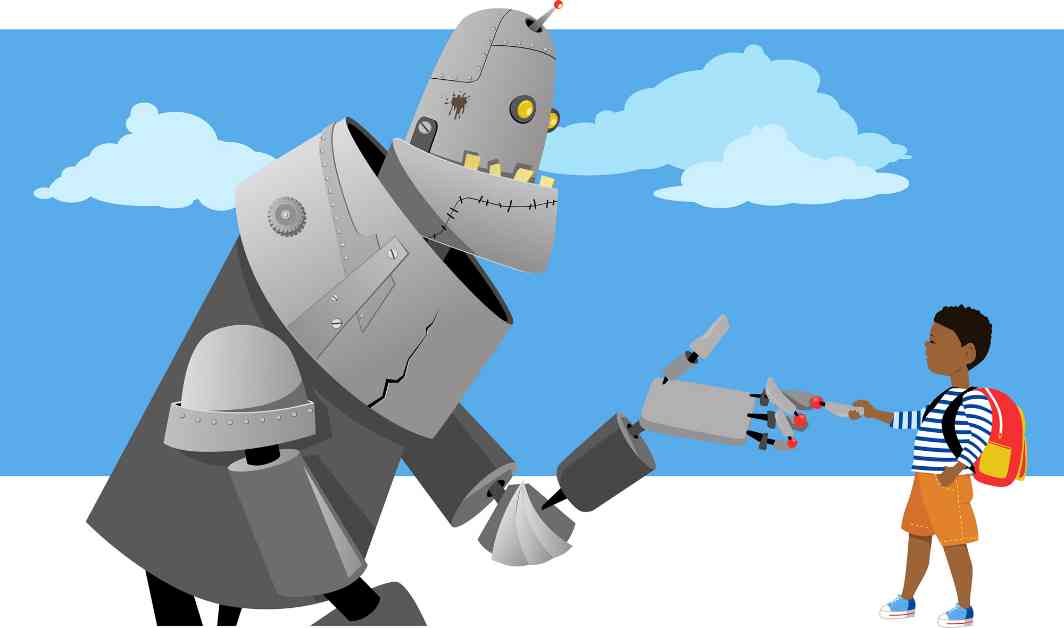Technology plays a crucial role in shaping the future of work and education in the United States. A recent poll conducted by OZY and SurveyMonkey reveals that a majority of Americans believe technology companies should take a more active role in enhancing U.S. education by creating apprenticeship programs and providing additional technology resources. The survey also delves into various aspects of post-secondary education and the workforce, shedding light on the public’s attitudes towards free higher education, online learning, classroom teachers, and more.
### Technology Companies’ Role in U.S. High Schools
The poll results indicate that a significant portion of the population is in favor of technology companies playing a more prominent role in improving U.S. high schools. Specifically, 57 percent of respondents expressed support for tech companies creating apprenticeship programs, while 50 percent believe these companies should provide technology resources in the classroom. Additionally, 42 percent feel that technology companies should support teachers in utilizing technology effectively, and 30 percent are in favor of these companies sponsoring charter schools in low-income areas.
### Support for Free Post-Secondary Education
When it comes to the concept of free post-secondary education, the survey findings are quite telling. A substantial 42 percent of respondents strongly support the federal government offering free post-secondary education to all Americans, while 27 percent somewhat support this idea. On the other hand, 17 percent strongly oppose free higher education, with 11 percent somewhat opposing it. Interestingly, 57 percent of those in favor of free post-secondary education are willing to pay increased taxes to cover the cost, while 42 percent are not.
### Classroom Teachers vs. Robots
The survey participants overwhelmingly value the role of classroom teachers in education, with 92 percent agreeing that teachers cannot be replaced by robots. The human interaction provided by teachers is deemed essential for effective learning, outweighing the notion that robots could be more cost-effective and efficient instructors. Only 6 percent of respondents favored the idea of robots replacing human teachers.
### Purpose of Higher Education
Opinions are split on the purpose of higher education, with 49 percent believing its primary goal is to teach people how to think, while another 49 percent feel its purpose is to prepare individuals for specific jobs. This division reflects the diverse perspectives on the educational outcomes that higher education should strive to achieve.
### Future of Science and Technology
The survey also explored perceptions of the role of college degrees in the future success of individuals in science and technology fields. A majority of participants (56 percent) believe that most people will require a college degree to succeed in these areas, while 42 percent argue that success in science and technology will not be contingent on possessing a college degree.
### Majors for Future Workforce
When it comes to preparing for the workforce of the future, the survey respondents favored computer science and engineering majors as the most beneficial, with 48 percent indicating these disciplines as the best preparation. Social sciences followed at 15 percent, and hard sciences like biology or chemistry at 14 percent. These preferences demonstrate a recognition of the importance of technical skills in navigating the evolving job market.
### Valuable Aspects of Post-High School Education
Participants were also asked to identify the most valuable aspects of their post-high school education in relation to their careers. Learning a tangible skill or trade emerged as the top choice, with 23 percent of respondents highlighting its significance. In-class learning that provided a broader understanding of the world ranked next at 22 percent, followed by professional networks and connections at 17 percent. These responses underscore the diverse benefits that individuals derive from their educational experiences beyond obtaining a degree.
### Methodology and Demographics
The online poll conducted from August 7-9 surveyed 3,350 adults across the country, including 631 millennials aged 18 to 34. The responses were weighted for age, race, sex, education, and geography to reflect the demographic composition of the U.S. The margin of error for the survey is estimated at plus or minus 3.0 percentage points, ensuring a reliable representation of public sentiments on the impact of technology on education and the workforce.
In conclusion, the poll results offer valuable insights into the public’s perspectives on the role of technology in education and the evolving landscape of work in the United States. As technology continues to shape the future of learning and employment, it is essential to consider the diverse opinions and preferences of individuals regarding the integration of technology in educational settings and the preparation for the workforce of tomorrow.
